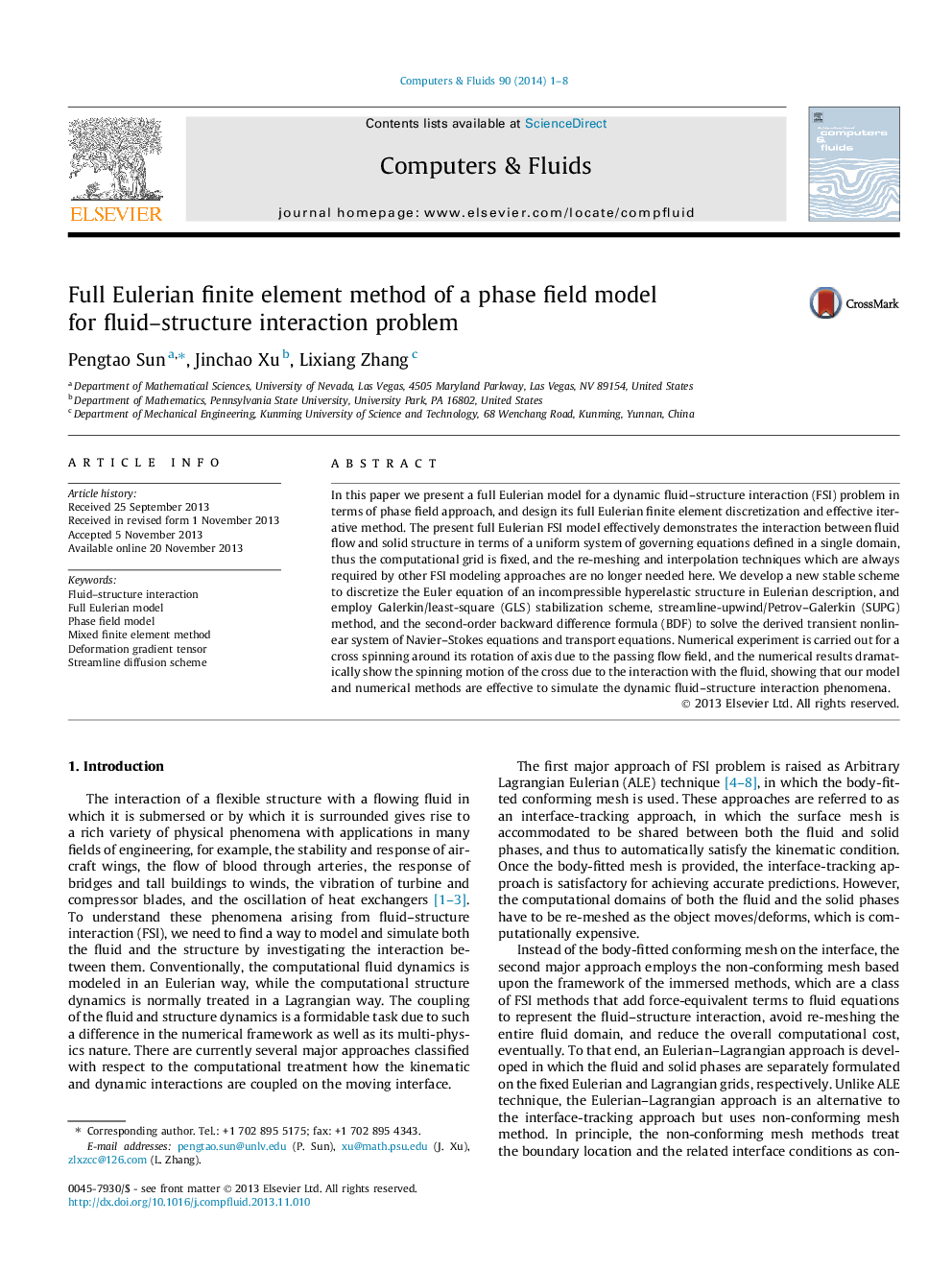| کد مقاله | کد نشریه | سال انتشار | مقاله انگلیسی | نسخه تمام متن |
|---|---|---|---|---|
| 762066 | 1462720 | 2014 | 8 صفحه PDF | دانلود رایگان |
• A one-continuum Eulerian model in terms of phase field is developed for FSI problem.
• We develop a new stable scheme for an incompressible hyperelastic structure equation.
• We develop Galerkin/least-square finite element method to solve fluid–structure model.
• We design a streamline-diffusion scheme for phase field and deformation tensor PDEs.
• A cross passively spinning around its axis by interacting with fluid is implemented.
In this paper we present a full Eulerian model for a dynamic fluid–structure interaction (FSI) problem in terms of phase field approach, and design its full Eulerian finite element discretization and effective iterative method. The present full Eulerian FSI model effectively demonstrates the interaction between fluid flow and solid structure in terms of a uniform system of governing equations defined in a single domain, thus the computational grid is fixed, and the re-meshing and interpolation techniques which are always required by other FSI modeling approaches are no longer needed here. We develop a new stable scheme to discretize the Euler equation of an incompressible hyperelastic structure in Eulerian description, and employ Galerkin/least-square (GLS) stabilization scheme, streamline-upwind/Petrov–Galerkin (SUPG) method, and the second-order backward difference formula (BDF) to solve the derived transient nonlinear system of Navier–Stokes equations and transport equations. Numerical experiment is carried out for a cross spinning around its rotation of axis due to the passing flow field, and the numerical results dramatically show the spinning motion of the cross due to the interaction with the fluid, showing that our model and numerical methods are effective to simulate the dynamic fluid–structure interaction phenomena.
Journal: Computers & Fluids - Volume 90, 10 February 2014, Pages 1–8
